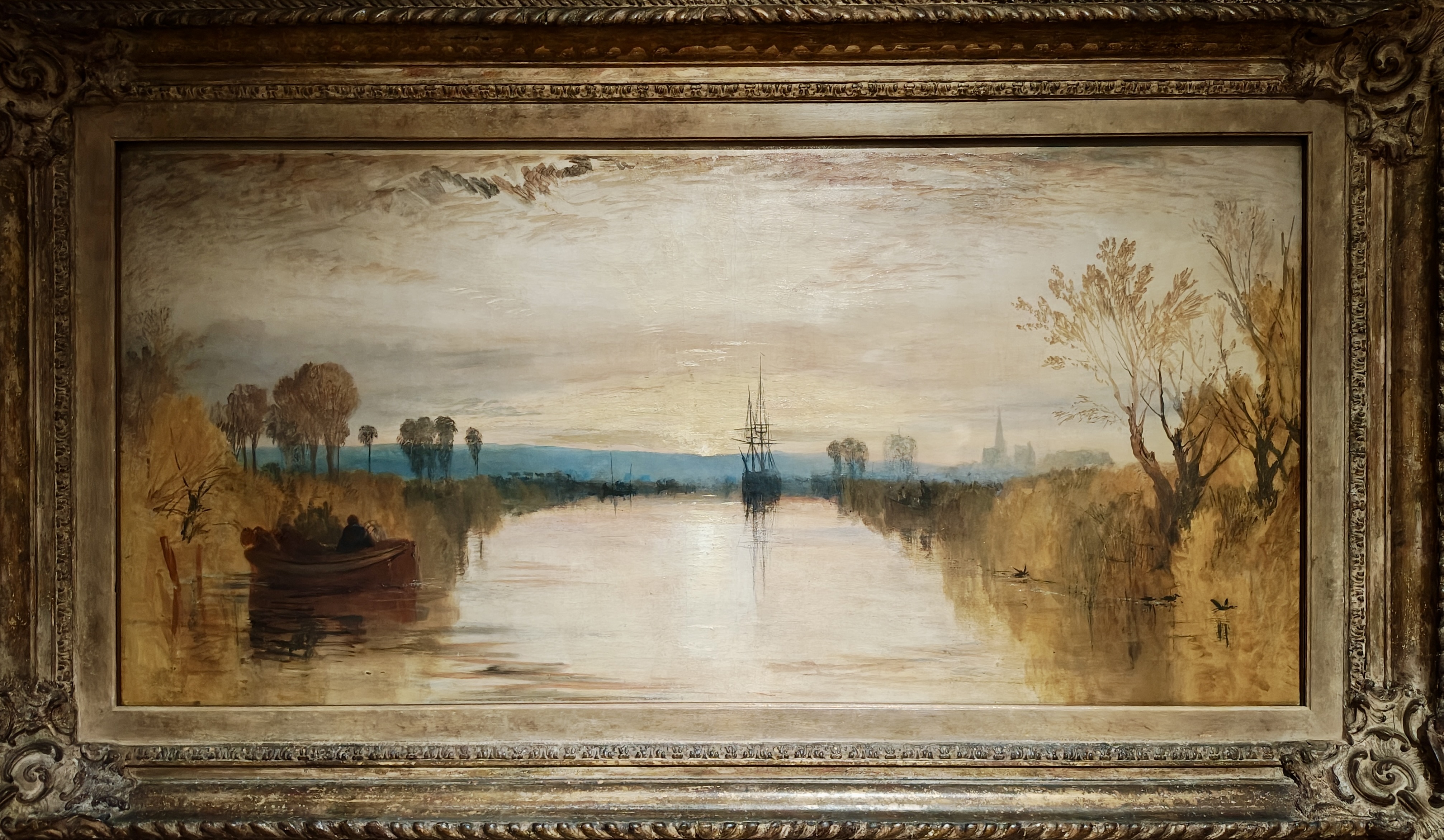Painting With Light

The nineteenth century British artist JMW Turner is famous for the luminous quality of his paintings. Fifty years before Impressionism revolutionized the art world, Turner was pushing past the boundaries of naturalism using his own technique and vision. He painted scenes that transcended their ostensible subjects - a ship at sea, for example - by elevating the natural elements around them. Turner was especially skillful at painting light, not so much as to create a realistic impression, but to establish a mood or a sense of the spiritual force of nature.
Most of Turner’s paintings are housed at Tate Britain in London. There is also a small collection at Petworth House in West Sussex, where the artist was a frequent guest of George Wyndham, the Third Earl of Egremont. Under the earl’s patronage, Turner painted many pastoral scenes of the earl’s estate, often making several drafts before settling on a final version. For example, in the first study of Petworth Park: Tillington Church in the Distance, the earl is out walking with his hounds. In the final version, the earl has gone, to be replaced by a cricket match, with deer improbably grazing a few yards off.
The earl was a keen proponent of canal building, which had its brief heyday in the early nineteenth century, when canals became the means by which goods could be easily and economically conveyed, at least until the advent of the railways. In 1828 Turner painted two canvases of the Chichester Canal. The first of these, known as a “sample study”, appears in a modest exhibition at Petworth House entitled, “Turner’s Vision at Petworth.”
I wouldn’t usually mention the entry fee for the exhibition, (there is an additional charge to enter the house) but it was £10.00. After handing over the requisite tenner, one could be forgiven for thinking that there was better value to be had elsewhere. On entering, one discovers that there is a grand total of two oil paintings, along with numerous small sketches and watercolors. However, a minimal presentation has value in forcing you to focus on what there is; fortunately, the painting of Chichester Canal is a stunner.
The “sample study” version easily outshines its official successor, which hangs in the Carved Room at Petworth House. The first painting depicts the canal and the surrounding countryside, along with a ship, and a small boat in which the painter himself is supposedly depicted. However, the viewer is initially drawn not to the peripheral objects but to the center of the picture, where the setting sun radiates light across the whole of the canvas.
All art captures a moment in time, yet in this picture Turner manages to capture something else: a transcendent moment, where the light holds still and transforms the surrounding landscape. The longer one spends with the painting, the more there is to see. Personally speaking, the painting conveyed a powerful sense of peace. It drew me in, like a piece of music that communicates without words.
After spending time with the picture, I asked permission to take a photo of it with my phone. There weren’t many people in the small exhibition room, which was a blessing. Later I recalled visits to other galleries - the last one being the Museum of Fine Arts, Boston - where the volume of people mitigated against the quiet appreciation of the art on display. In this smaller setting, I could take time to absorb one picture and admire its serenity and beauty. The painting reminded me of something that pertains to all art; as the author James Joyce observed, "in the particular is contained the universal.”
Father David


0 Comments
There are no comments.
Stay Tuned
Sign-up for David's newsletter